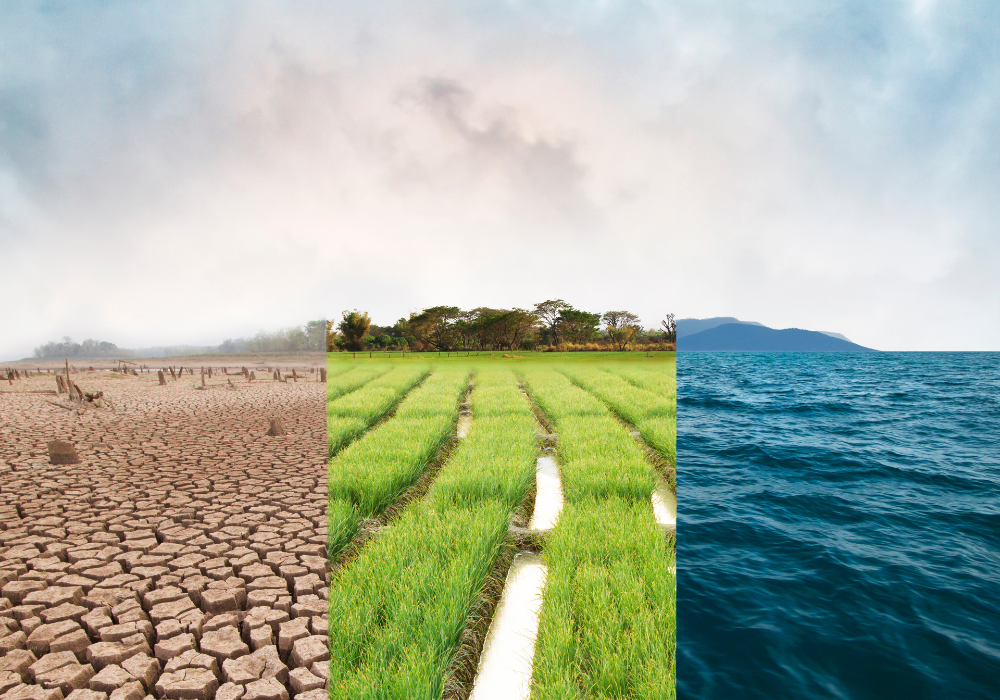By Ilana Gottlieb | Economist, Economic Impact | Oxford Economics
Originally published by Oxford Economics
When business leaders think of the “thresholds” that hold meaningful consequences for their organizations, ones affecting corporate tax or regulatory requirements might be the examples that first come to mind. However, another kind of threshold deserves businesses’ more immediate attention – the environmental thresholds at which abrupt and potentially irreversible changes to the Earth and its systems occurs.
Understanding these environmental thresholds provides essential context for corporate sustainability efforts, and more broadly, reinforces the importance of global action on sustainability issues.
Non-linear Environmental Risks, and the Point of No Return

Every year the publication of the World Economic Forum’s (WEF) annual Global Risks Report makes for an interesting, if alarming, read. The report assesses the global risks landscape based on insights from leaders in academia, business, government, and civil society.
The 2024 report introduced a new entrant to its global risks list – critical change to Earth systems – defined as “long-term, potentially irreversible, and self-perpetuating changes to critical planetary systems, as a result of breaching a critical threshold or ‘tipping point’, at a regional or global level, that have abrupt and severe impacts on planet health or human welfare.” “Critical change to Earth systems” was ranked as the second most severe risk over the next decade, after the risk of extreme weather events.
The WEF report states that the threshold for triggering critical change to Earth systems is likely to be passed at or before 1.5°C of global warming, which is currently anticipated to be reached by the early 2030s. The projected impacts of approaching or crossing Earth system thresholds hold significant implications for businesses’ bottom line.
Consider a critical threshold addressed in the WEF report – the risk of the Amazon Rainforest tipping into a savannah-like state. This could reduce the level of atmospheric moisture recycling, which in turn increases the risks of forest fires – jeopardizing global value chains with connections to the region. For example, forest fires can affect infrastructure for sourcing minerals like copper from or adjacent to the Amazon basin, which consequently can impact the production of electronic products such as semiconductors, affecting technology companies and their investors globally.
The collapse of the Greenland and West Antarctic Ice Sheets is another threshold highlighted by the WEF. Crossing this threshold could trigger rapid sea level rise and potentially expose half a billion people to annual coastal flooding events by 2100. In turn, coastal flooding can damage built infrastructure, threaten marine ecosystem services, and – among other impacts – increase the salinity of freshwater, reducing water supply for agriculture and threatening associated value chains.
The WEF explains that the impacts of crossing Earth system thresholds will be felt on a systemic level, as environmental impacts like biodiversity loss and ecosystem collapse will in turn result in further socioeconomic implications, such as involuntary migration and chronic health conditions. These compounding risks will reverberate across the real economy and financial systems.
Contextualizing Earth System Thresholds to Enhance Business Resilience

While government, academia, and civil society groups all ranked the risk of “critical change to Earth systems” as one of the top 10 most severe risks faced over the next two years, the risk did not feature as a short-term priority for the private sector. This raises the question of whether businesses are underestimating the severity of these risks in their decision-making.
One reason for this disconnect is the lack of quantification of sustainability-related impacts and risks along a business’s value chain. Most models used by businesses assume that environmental resources can be substituted in the face of business disruptions. However, a significant environmental disruption may mean no alternative substitutes are available in the short to medium term. Moreover, if Earth system thresholds are triggered, such as the Amazon shifting to a savannah-like state, environmental impacts may be irreversible and permanent – requiring a complete rethink of current operating models across the broader economy.
While significant academic research efforts have been made to scientifically quantify these thresholds of the Earth systems, economic models are needed to provide a more accurate picture of the impact and risk landscape for businesses, and how they can better act within this changing context.
Doing so will require mapping and forecasting sustainability-related impacts and risks not just as a box-ticking exercise, but rather as a means to enhance business resilience and the sustainability of the economy as a whole.
Our world faces a myriad of global risks in the next few years. Businesses that will fare best are those that understand how their activities interact with Earth systems and use this opportunity to champion innovative and sustainable business operating models.
The views and opinions expressed by blog authors are those of the authors and do not necessarily reflect the official policy or position of the Center for Exhibition Industry Research. Any content provided by our bloggers or authors are of their opinion. All content provided on this blog is for informational purposes only. CEIR makes no representations as to the accuracy or completeness of any information on this site or found by following any link on this site. CEIR will not be liable for any errors or omissions in this information nor for the availability of this infor
